Hey there, fellow dog enthusiasts! As a devoted dog mom to my furry trio (two boys and a girl!), I’ve had a front-row seat to the unique personalities and quirks that come with each gender. Now, I know what you’re thinking – are male dogs really more rambunctious? Are females always the snuggly ones? Well, get ready to have some of those notions challenged!
This guide is your ticket to understanding the real deal when it comes to the lifestyle differences between male and female dogs. We’ll dive deep into the science-backed facts, bust some myths, and sprinkle in a few of my own hilarious dog-mom stories along the way. By the end, you’ll be armed with the knowledge you need to choose the perfect pup for your unique lifestyle. Let’s get started, shall we?
Aggression: It’s Not Just a Boy Thing
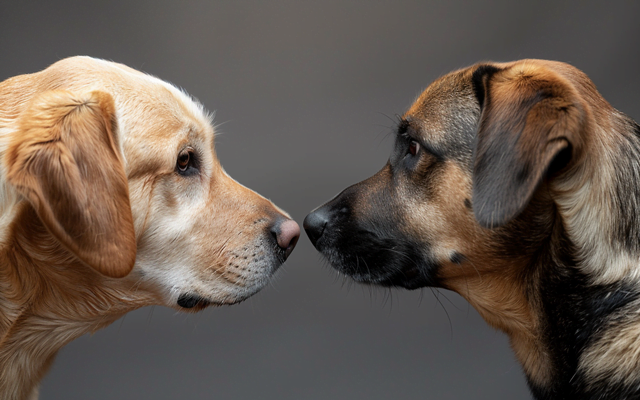
Let’s kick things off by tackling one of the biggest misconceptions out there – that male dogs are inherently more aggressive. Now, I’ll be honest, my boy Bruno does have a tendency to get a little too enthusiastic during fetch, but that’s more about his Labrador retriever genes than his gender.
Recent studies and experts in the field have consistently shown that aggression in dogs isn’t determined by whether they’re a boy or a girl. Instead, it’s shaped by a complex cocktail of factors, including:
- Individual Temperament: Just like humans, some dogs are naturally more laid-back, while others are born with a bit more fire.
- Early Socialization: The experiences a puppy has during their critical developmental period play a HUGE role in shaping their behavior as adults.
- Training: Consistent, positive reinforcement training is essential for all dogs, regardless of gender, to help them learn appropriate social skills.
So, while a male dog might be more likely to engage in some playful roughhousing with his buddies, that doesn’t automatically translate to aggression. The same goes for female dogs – they can also display aggressive behaviors if not properly socialized and trained.
Training and Obedience: The Battle of the Sexes?
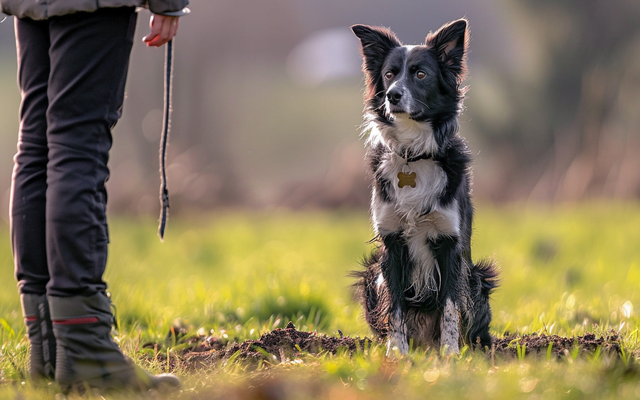
You’ve probably heard the stereotype that female dogs are easier to train. Well, let me tell you, my girl Bella has put that theory to the test on more than one occasion! (Potty training mishaps, anyone?)
While some studies suggest that females may have a slight edge in certain aspects of training (like attention span and focus), the reality is far more nuanced. The truth is, every dog is an individual, and their trainability depends on a combination of factors:
- Breed: Some breeds are naturally more eager to please and respond well to training, while others are more independent and require a bit more patience.
- Personality: Just like people, some dogs are more motivated by food, others by praise, and some by a good game of tug-of-war. Finding what makes your dog tick is key to successful training.
- Training Methods: Positive reinforcement techniques, like rewarding desired behaviors with treats or praise, have been proven to be effective for both male and female dogs.
So, whether you’re welcoming a bouncy boy or a sassy girl into your home, be prepared to invest time and effort into training. And remember, patience and consistency are your best friends!
The Hormonal Connection: A Lesser-Known Factor
Now, here’s a bit of a curveball you might not have heard about – hormones! Yes, those little chemical messengers can influence a dog’s behavior, but the effects are often subtle and can vary widely between individuals.
- Testosterone: This hormone is more prevalent in male dogs and can play a role in dominance and territorial behaviors. However, neutering can significantly reduce testosterone levels and its associated effects.
- Estrogen: This hormone, more common in female dogs, can influence mood and maternal instincts. But again, spaying can alter these levels.
The key takeaway here is that hormones are just one piece of the puzzle. They don’t dictate a dog’s behavior, but they can contribute to it in certain situations. If you have any concerns about your dog’s behavior, don’t hesitate to chat with your vet or a qualified animal behaviorist. They can help you understand the interplay of hormones, personality, and environment and develop a tailored training plan.
The Nuances of Behavior: He’s Not Always Playful, She’s Not Always Clingy

Okay, now that we’ve busted some myths, let’s dig deeper into the fascinating world of dog behavior. Because here’s the thing – while there might be some subtle tendencies associated with gender, the reality is that each dog is a unique individual, shaped by their breed, personality, and life experiences.
Play Styles and Socialization: More Than Just Rough and Tumble
If you’ve ever watched a group of dogs at the dog park, you’ve probably noticed a variety of play styles. Some pups engage in full-on wrestling matches, while others prefer a more gentle game of tag or chase. While it’s true that male dogs might be more prone to roughhousing, it’s not a hard and fast rule.
I’ve seen plenty of female dogs who can hold their own in a play fight, and some male dogs who prefer a calmer approach to playtime. In fact, research has shown that early socialization experiences play a crucial role in shaping a dog’s play style.
Puppies who have positive interactions with a variety of dogs during their first few months of life are more likely to develop appropriate play skills and social etiquette. On the other hand, puppies who are isolated or have limited social experiences may struggle to understand the nuances of dog-to-dog communication and may be more prone to misinterpreting signals, leading to conflict.
So, whether you’re raising a male or female puppy, it’s essential to prioritize early and consistent socialization. Expose them to different environments, dogs of all shapes and sizes, and positive social experiences. This will help them develop into well-adjusted, confident adults who can navigate the complex world of canine communication with ease.
The Importance of Early Experiences: A Lifelong Impact

Speaking of puppyhood, did you know that a dog’s early experiences can have a profound and lasting impact on their behavior as adults? It’s true! Those first few weeks and months are a critical period for learning and development, and the lessons they learn during this time can shape their personality, temperament, and social skills.
For example, puppies who are raised in a loving, nurturing environment with plenty of positive interaction with their mother and littermates are more likely to be confident, well-adjusted, and comfortable in social situations. On the other hand, puppies who are neglected or separated from their mother too early may be more prone to anxiety, fearfulness, and aggression.
This is why it’s so important to ask questions about a puppy’s upbringing before bringing them home. If you’re adopting from a rescue organization, they should be able to provide you with information about the puppy’s history and temperament. If you’re purchasing from a breeder, ask to see the puppy’s living environment and meet the mother dog.
By understanding the role of early experiences, you can better anticipate and address any potential behavioral challenges your dog may face down the road. And remember, with patience, love, and positive reinforcement training, you can help your dog overcome any hurdles and thrive in their new home.
Affection and Independence: A Spectrum of Love
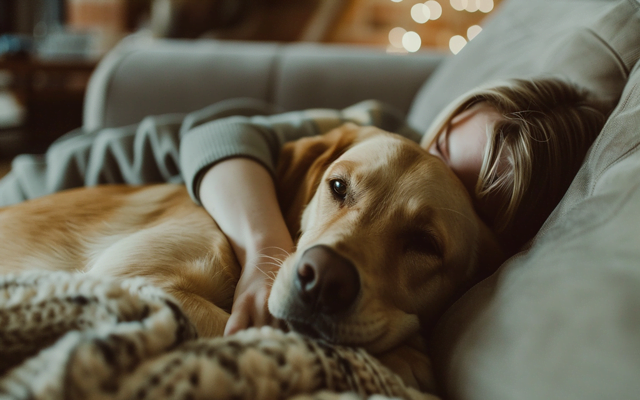
Let’s talk about another stereotype – that female dogs are always the clingy, affectionate ones, while males are more aloof and independent. While there might be some truth to this for certain breeds or individual dogs, it’s important to remember that every dog is different.
I’ve known male dogs who are the ultimate cuddle bugs, always vying for a spot on the couch next to their humans. And I’ve met female dogs who are fiercely independent and prefer to explore the world on their own terms.
The level of affection and independence a dog displays often comes down to their individual personality, upbringing, and the bond they share with their owner. Some dogs are naturally more outgoing and social, while others are more reserved and prefer to keep to themselves.
The key is to respect your dog’s individual preferences and not try to force them into a mold. If your dog is a cuddle monster, shower them with love and attention. If they’re more of a lone wolf, give them the space they need to recharge.
And remember, regardless of their gender, all dogs need and crave love, attention, and positive reinforcement from their humans. So, make sure to give your furry friend plenty of belly rubs, ear scratches, and heartfelt praise. It’s the best way to build a strong, lasting bond that will bring joy to both of you.
Physical Differences: More Than Meets the Eye

Alright, let’s shift gears a bit and talk about the physical differences between male and female dogs. Now, this is where things can get a little tricky because there’s a whole lot of variation between breeds and even within individual litters. But, there are some general trends we can explore.
Size and Strength: The Tale of the Tape
Let’s start with the most obvious difference – size. In general, male dogs tend to be slightly larger and heavier than their female counterparts. This is especially true for certain breeds like Great Danes, Mastiffs, and Saint Bernards, where the size difference can be quite significant.
However, it’s important to remember that this is just an average. There are plenty of petite male dogs and hefty female dogs out there. And even within a single breed, you’ll find a wide range of sizes depending on genetics, nutrition, and exercise.
So, if you’re concerned about having a dog who’s too big or too small for your living space or lifestyle, don’t let gender be the deciding factor. Instead, focus on choosing a breed that’s known for its size and energy level that aligns with your needs.
Health Considerations: Beyond the Gender Divide
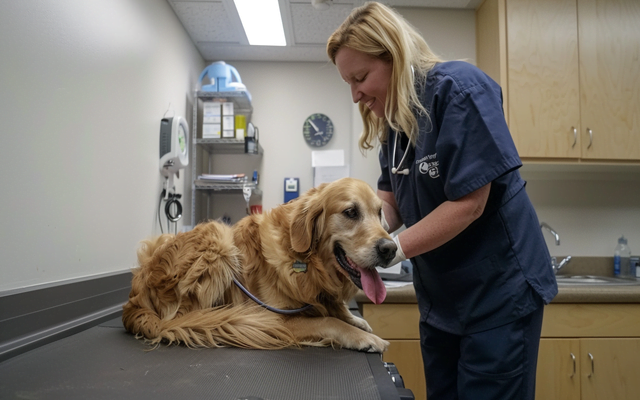
When it comes to health, there are some breed-specific concerns that can be more common in one sex or the other. For example, intact female dogs (those who haven’t been spayed) have a higher risk of developing mammary tumors and uterine infections. On the other hand, male dogs are more prone to certain types of cancer, like prostate cancer.
It’s important to be aware of these potential health risks and discuss them with your vet. They can help you make informed decisions about spaying or neutering your dog, as well as recommend preventative care measures to keep your furry friend healthy and happy for years to come.
Now, I know the topic of spaying and neutering can be a bit controversial, so I won’t dive too deep into it here. But, I do want to encourage you to do your research and weigh the pros and cons carefully before making a decision. Your vet can be a valuable resource in this process.
Beyond Spaying and Neutering:
There are a few other health considerations worth mentioning, regardless of gender. For example, some breeds are prone to certain genetic conditions, like hip dysplasia or heart disease. It’s important to choose a reputable breeder who screens their dogs for these conditions and to keep up with regular vet checkups throughout your dog’s life.
Remember, preventative care is key to keeping your furry friend healthy and happy. So, schedule those annual exams, stay up-to-date on vaccinations, and don’t hesitate to talk to your vet if you notice any changes in your dog’s health or behavior.
Lifestyle Fit: Finding Your Perfect Match

Now that we’ve covered the behavioral and physical differences between male and female dogs, let’s talk about how those differences might play out in your everyday life. After all, choosing a dog is a big decision, and you want to make sure you’re picking a furry companion who’s the perfect fit for your lifestyle.
Family Dynamics: The Right Fit for Your Pack
If you’ve got a busy household with kids or other pets, it’s important to consider how a dog’s gender might influence their interactions with the rest of your crew. Now, before you jump to any conclusions, let me assure you that both male and female dogs can make wonderful family pets. However, there are a few things to keep in mind.
- Male Dogs and Children: Some people worry about male dogs being too rambunctious or dominant around young children. While it’s true that some male dogs may have a higher energy level, with proper training and socialization, they can learn to be gentle and patient with kids.
- Female Dogs and Other Pets: Female dogs may be more likely to assert dominance over other female dogs in the household. This can sometimes lead to conflicts, especially if the dogs haven’t been properly introduced or socialized. However, with proper training and management, these issues can often be resolved.
The key takeaway here is that, regardless of gender, it’s crucial to supervise interactions between your dog and other members of your household, especially children and other pets. Proper training and socialization are essential for all dogs, but they’re especially important when you’re dealing with multiple animals or young children.
Activity Level and Lifestyle: The Energetic vs. the Couch Potato

Let’s face it, some of us are marathon runners, while others are more likely to be found curled up on the couch with a good book. The same goes for dogs! Some breeds are naturally high-energy and need lots of exercise and mental stimulation, while others are content with a leisurely stroll around the block and a nap in the sun.
When choosing a dog, it’s important to consider your own activity level and lifestyle. If you’re a couch potato, a high-energy herding dog like a Border Collie might not be the best fit. Similarly, if you’re an avid hiker or runner, a low-energy lap dog like a Shih Tzu might not be able to keep up.
Of course, gender can play a role in energy levels as well. In general, male dogs tend to be a bit more energetic than female dogs, especially when they’re intact. However, this is not always the case, and there are plenty of high-energy female dogs and mellow male dogs out there.
The best way to gauge a dog’s energy level is to spend some time with them and observe their behavior. Ask the breeder or rescue organization about the dog’s typical activity level and exercise needs. And remember, regardless of gender or breed, all dogs need regular exercise to stay healthy and happy.
Cost Considerations: The Price of Puppy Love

Let’s be real, owning a dog isn’t cheap. There are food costs, vet bills, grooming expenses, and more. And yes, gender can sometimes factor into those costs.
For example, spaying a female dog typically costs more than neutering a male dog. This is because the spaying procedure is more complex and invasive. Additionally, female dogs who haven’t been spayed may require more frequent vet visits for checkups and preventative care.
Of course, there are also potential health issues that are more common in one sex or the other, which can lead to additional vet bills. For example, male dogs are more prone to prostate problems, while female dogs are at higher risk for mammary tumors.
It’s important to factor these potential costs into your decision-making process when choosing a dog. While the initial purchase price or adoption fee might be similar for male and female dogs, the long-term costs can vary depending on their health and veterinary needs.
Choosing Your Companion: A Holistic Approach

Alright, my fellow dog lovers, we’ve covered a lot of ground, haven’t we? We’ve debunked myths, explored behavioral nuances, and delved into the physical and lifestyle considerations of choosing between a male and female dog. But before we wrap things up, I want to share a few final thoughts that might just surprise you.
Prioritize Personality and Fit: The Heart of the Matter

At the end of the day, the most important factor in choosing your canine companion isn’t their gender – it’s their personality! A dog’s individual temperament, energy level, and quirks are what truly make them special and determine whether they’ll thrive in your home and lifestyle.
I’ll never forget the day I met my rescue pup, Charlie. He was a scrappy little terrier mix with a mischievous grin and a heart full of love. I wasn’t looking for a male dog specifically, but there was just something about his playful spirit and goofy antics that drew me in. It was a connection I couldn’t ignore, and it turned out to be one of the best decisions I ever made.
Charlie has brought so much joy and laughter into my life, and I can’t imagine my home without him. His gender is just a small part of what makes him who he is. It’s his unique personality, his silly quirks, and the unconditional love he gives that truly make him my best friend.
So, when you’re choosing a dog, don’t get too hung up on gender stereotypes. Instead, focus on finding a dog whose personality meshes well with yours. Spend time with them, play with them, and get to know their individual quirks and charms.
Adoption vs. Breeder: A Choice with Heart
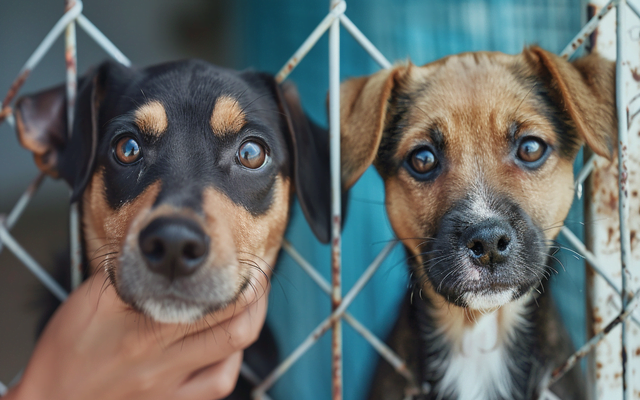
Now, I’d be remiss if I didn’t touch on the topic of where to get your furry friend. There are two main options: adoption from a shelter or rescue organization, or purchasing from a breeder. Both have their pros and cons, and the “right” choice depends on your personal values and circumstances.
Adoption:
- Pros: You’re giving a loving home to a dog in need, and there are countless wonderful dogs of all breeds, ages, and sizes waiting for their forever families.
- Cons: You may have less information about the dog’s background and health history, and there might be a longer wait time to find the perfect match.
Breeder:
- Pros: You can often choose a specific breed and have more control over the dog’s lineage and early socialization experiences.
- Cons: Reputable breeders can be expensive, and there’s always the risk of supporting unethical breeding practices if you’re not careful.
Regardless of which path you choose, do your research and make sure you’re working with a reputable organization or breeder who prioritizes the health and well-being of their dogs.
The Importance of Intuition: Trust Your Gut

Last but not least, I want to talk about something that’s often overlooked in the dog-choosing process – intuition. Yes, you heard me right! Sometimes, the best way to choose a dog is to simply trust your gut feeling.
Have you ever met a dog and just knew they were the one? Maybe you felt an instant connection, or maybe there was just something about their energy that resonated with you. Whatever it was, that feeling is worth paying attention to.
I believe that our intuition can guide us towards the right dog, even if it doesn’t make logical sense on paper. So, don’t be afraid to listen to your heart when you’re choosing a furry friend. After all, the bond you share with your dog is a special one, and it’s often based on a feeling that’s hard to put into words.
Conclusion
Whew! We’ve covered a lot of ground in this doggy deep dive, haven’t we? From debunking myths about aggression and trainability to exploring the subtle nuances of behavior and lifestyle considerations, we’ve left no stone unturned. But as we wrap up this canine adventure, I want to leave you with one final, all-important message:
Yes, it’s as simple as that. While gender can play a role in a dog’s behavior and personality, it’s just one piece of the puzzle. Every dog is an individual with their own unique quirks, charms, and needs. And the most important thing is to find a furry friend who fits seamlessly into your life and fills your heart with joy.
So, whether you’re drawn to a playful pup who loves to fetch, a cuddly companion who craves your affection, or a loyal guardian who’ll always have your back, trust your instincts and choose the dog who speaks to your soul.
FAQ
Are male or female dogs better for first-time dog owners?
While there’s no one-size-fits-all answer, some first-time owners may find female dogs slightly easier to train due to potential differences in attention span. However, a dog’s breed and individual personality play a much larger role than gender. Ultimately, the best choice depends on your lifestyle and the specific dog you connect with.
Do male dogs always try to hump everything? Is this behavior more common in one sex than the other?
Humping behavior isn’t always sexual. It can be a sign of excitement, playfulness, or even stress. While male dogs are more often associated with humping, female dogs can also exhibit this behavior. Neutering or spaying can help reduce hormonally driven humping, but it may not eliminate it entirely.
Are there specific challenges or advantages to having a multi-dog household with both male and female dogs? How can I best manage their dynamics?
Multi-dog households with both sexes can be harmonious with proper management. Potential challenges include same-sex aggression or conflicts during mating seasons. Advantages can include balanced energy levels and diverse play styles. Neutering/spaying, supervised introductions, and individual training can help ensure a peaceful pack.
Do the behavioral differences between male and female dogs change as they age? Are there specific care considerations for senior dogs based on their sex?
As dogs age, hormonal influences on behavior may lessen. Senior males might become calmer, while some females may experience mood swings due to hormonal fluctuations. Health-wise, older females are prone to mammary tumors and uterine infections, while males may face prostate issues. Regular vet checkups are crucial for senior dogs of both sexes.
Beyond Spaying/Neutering: How does a dog’s reproductive status (intact vs. altered) impact their behavior and interactions with other dogs, especially of the opposite sex?
Even after spaying/neutering, residual hormones can influence behavior. Intact males might show more interest in female dogs in heat, while intact females may experience mood swings during their cycles. Understanding these hormonal influences can help you manage interactions and anticipate potential behaviors in multi-dog households.
Is there any evidence to suggest that one sex is more intuitive or better suited for emotional support roles than the other?
While anecdotal evidence exists, scientific studies haven’t definitively proven that one sex is inherently more intuitive or empathetic than the other. Both male and female dogs can make excellent emotional support animals, depending on their individual temperament and training. The most important factor is the bond between the dog and their human companion.

I’m Ashley Fowler and dogs have always been my companions from my earliest memories. Growing up, our family dog was my confidant, adventure buddy and sometimes partner in crime (sorry mom, about the chewed shoes!). That bond sparked a lifelong passion for learning about dogs – their unique personalities, their histories, and the special ways they fit into our lives. MDogsW is my way of sharing that passion and hopefully helping others experience the joy of finding their perfect puppy. When I’m not researching dog breeds, you can usually find me hiking with my trusty Beagle by my side or curled up with a cozy blanket, a cup of tea, and a stack of dog breed books.

